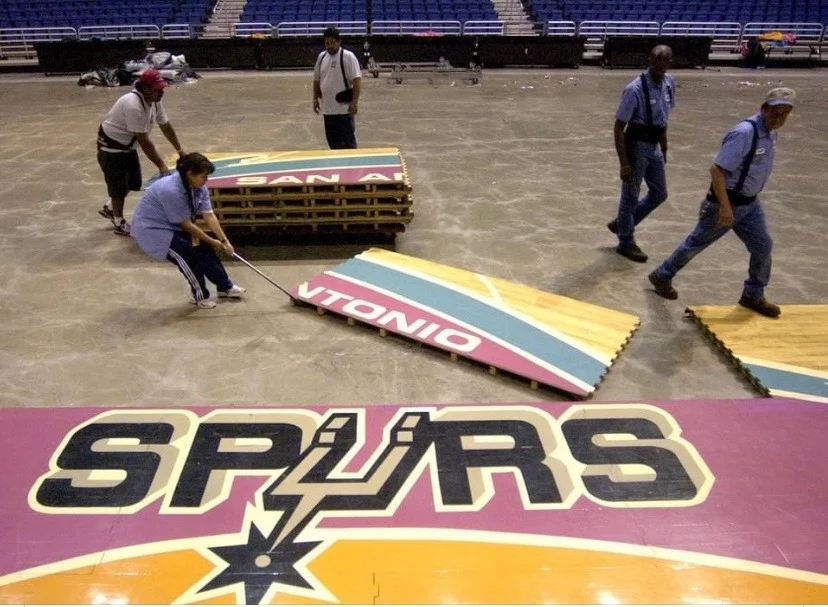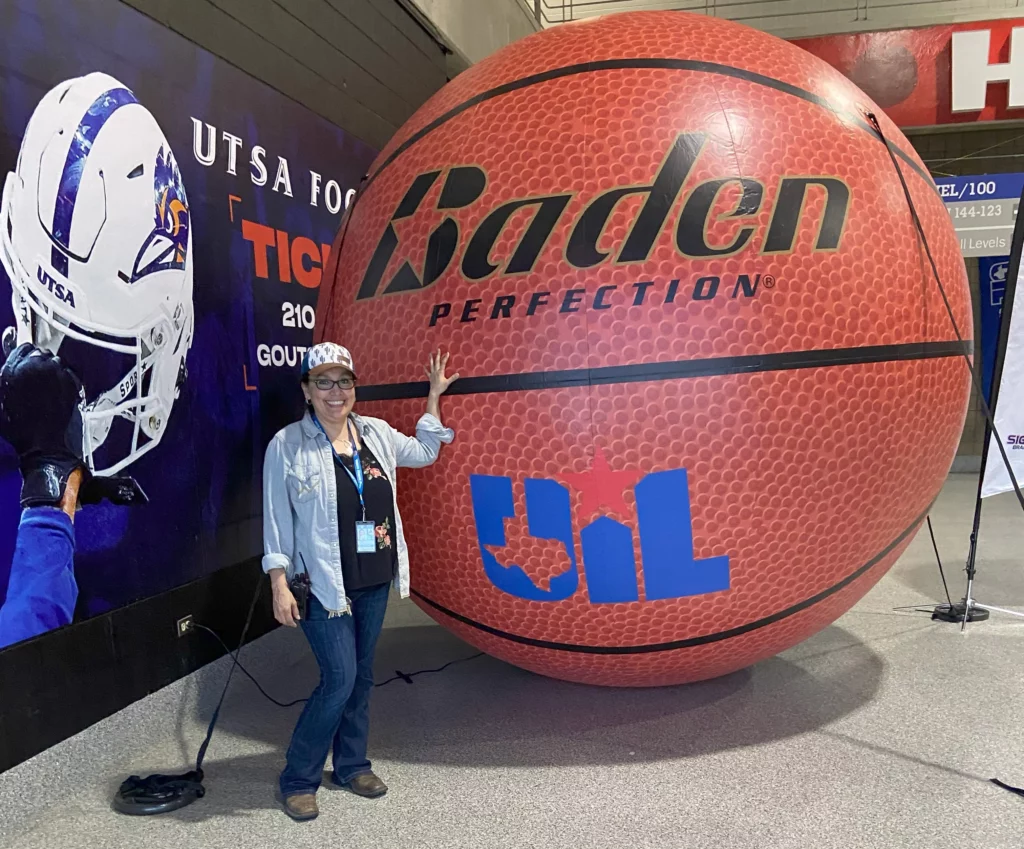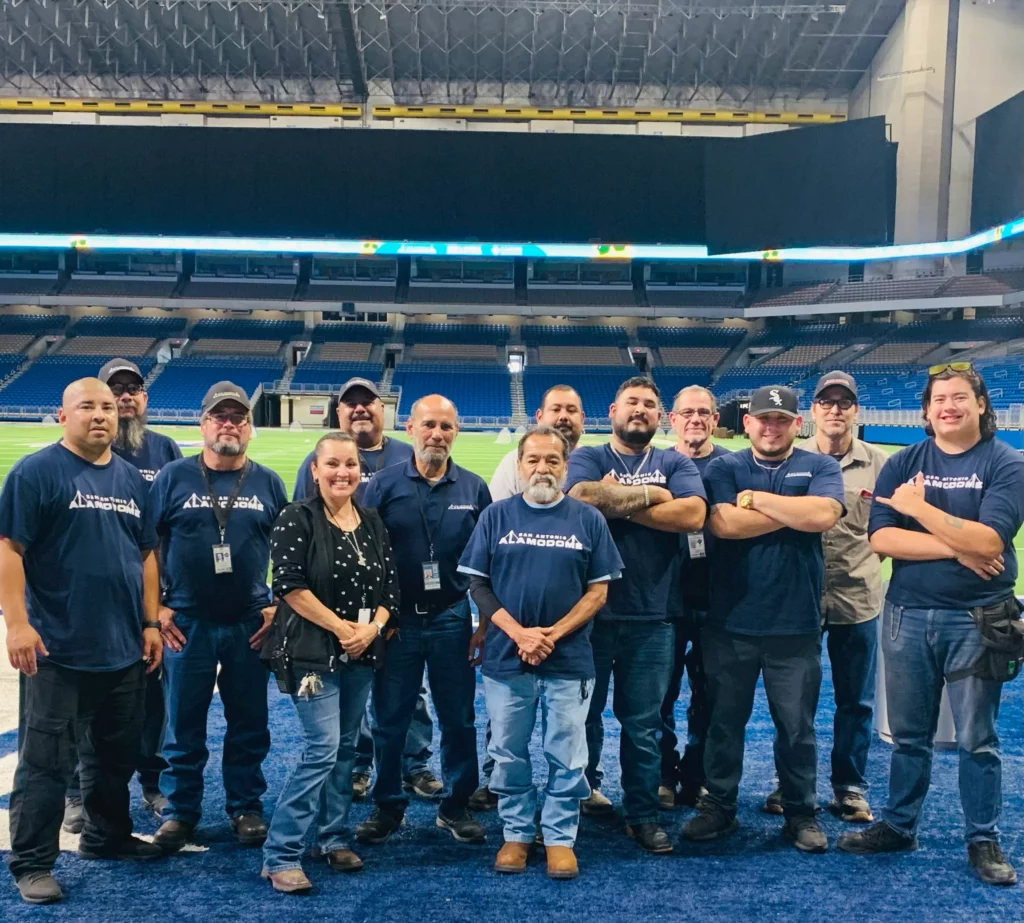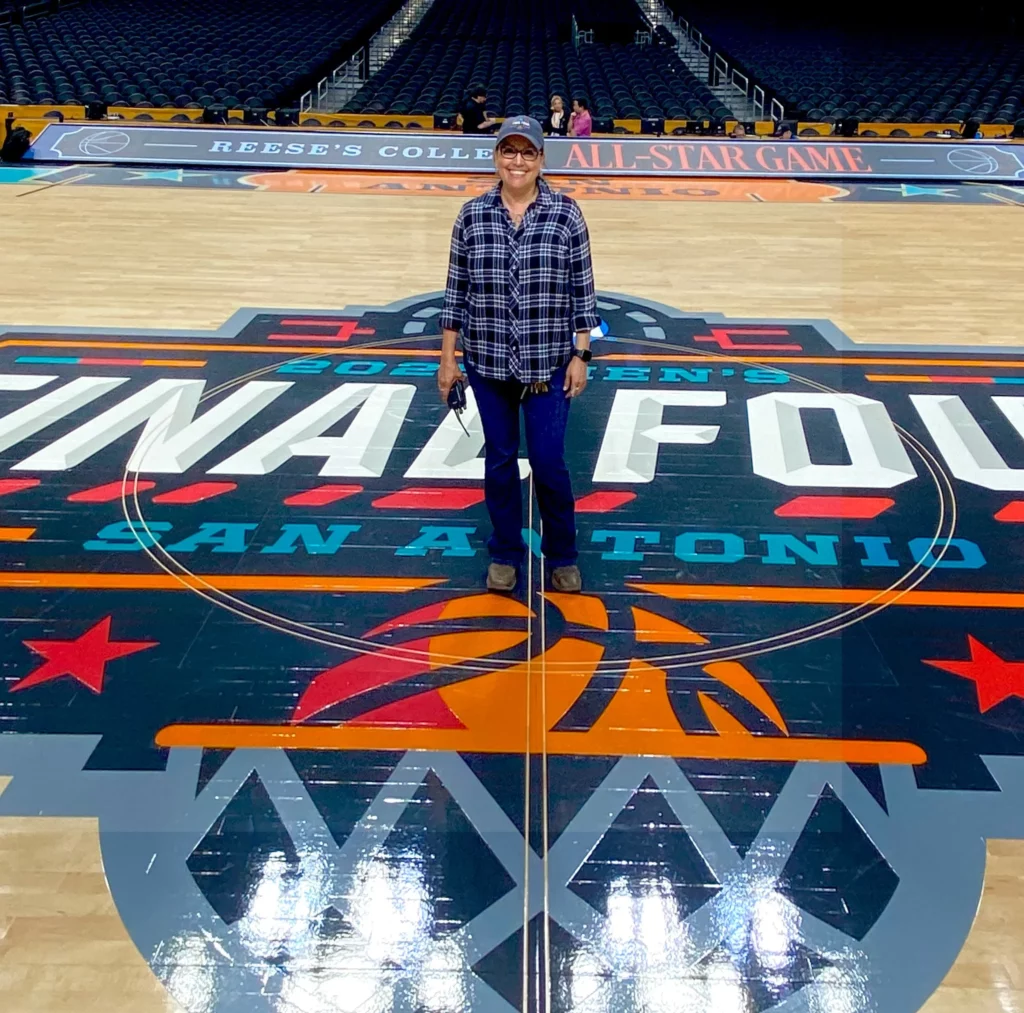When fans walk into the Alamodome on Valero Alamo Bowl game day, their focus is on the lights, the roar of the crowd, and the players storming the field. But what most never see is the team of people who made it all possible, like Alamodome Building Maintenance Specialist Lee DeHoyos.
Lee has been a behind-the-scenes constant at the Alamodome since the building opened. She started working there when she was just 19. “I started off with the cleaning [crew],” she said. “I think I did that for five or six years and then I became full-time. Then I started working with the conversion crew, setting up the football field, the concourse, and that’s when the Spurs were still here back then.”
That was the beginning of what has become a more than 30-year career in stadium operations. Over time, Lee rose through the ranks. “I was a crew leader for six years, then I moved up to building maintenance manager and I was that for about eight years,” she said. “Then they moved me to department facility coordinator, and I was doing that for about seven-eight years, and then I finally just recently got promoted.”


Her experience and leadership are vital to the Bowl’s set-up each December. Field conversions for football are among the most intense parts of the job, especially when other events are scheduled close to game week. “If they throw an event in there like a concert right before the Alamo Bowl, that’s when it could get kind of hectic,” she said. “Because then we have to make sure the floor is clear, we got to set up the turf, stuff like that.”
The turf itself is a logistical feat. “We keep it outside in the warehouse,” Lee explained. “We have two big forklifts that have to bring the turf rolls in on big racks in like real giant racks. Then we have to take them out of the racks, each row, and put them in order because they’re numbered.”
One of the most important details? “You have to get the first roll, which is the 50, perfectly straight, so everything else can come out straight,” she said. “We throw a string line down, so when we roll out the other rows all the hash marks and the sidelines line up.”
Once the turf is down, the work continues. Goalposts are assembled, benches and camera platforms are positioned, and nets for field goals are dropped from the catwalk above. All told, if things go smoothly, laying the turf takes about eight hours, but the full setup process stretches across two days.
Then there’s the equipment. “Usually, the worst problem is mechanical failure,” she said. “Having a hydraulic line bust on the machine while you’re doing it is no fun.” If the turf machine breaks, the team has to rely on two forklifts to roll it out.
Lee’s ability to keep things moving isn’t just about experience, it’s also about the tone she sets. “She leads by example,” said Jesse Carrillo, one of Lee’s colleagues on the Alamodome operations team. “She doesn’t ask us to do anything she wouldn’t do herself.”
Coworkers agree that Lee fosters a strong sense of collaboration. “She’s big on teamwork, and ensuring communication so that we can all do our jobs safely and quickly,” Jesse added.
Through it all, Lee and her team get the job done, often working long hours with tight deadlines. “We’ll have to work sometimes 12 hours a day to get everything done, but sometimes we’ll stay later,” she said. “We can go from a full stadium concert to a football game the next day. We’ve had to do [conversions] like that before.”
For Lee, the reward is in the result. “The most rewarding thing is when everything is complete and done on time, and the client is happy and the doors are ready,” she said. “You see the people coming in and they’re all excited about it. I like to see that.” Even after decades on the job, she still feels pride when she sees the finished product. “Even after all these years, we still surprise ourselves,” she said. “We’re still amazed at the building, the way it looks like once everything is set. Like the Alamo Bowl, you set all the banners and everything, it makes it look really nice.”
Her consistency is unmatched. “Sometimes I can’t believe I’m still here,” Lee said. “But I’ve never missed an event, and I never really thought about that until awhile back. The only time I was not here was back in 2018 when I got diagnosed with breast cancer. I was out for 10 months. So those 10 months is the only time I’ve actually missed an event.”
What’s kept her around so long? The people. “The main thing is that we all work as a team here and we all get along,” she said. “We’re like a family. A lot of these people I’ve been working with over 20 years already.” Leadership and communication are at the heart of how she manages her team. “We always meet before we have a conversion. We talk to staff and we let them know what to expect and what’s coming up, and if they have any ideas or input we’re open to anything like that,” she said. “[Building Maintenance Manager Tom McAfee] and I, sometimes we’ll buy lunch for the guys like pizza and drinks just to kind of keep the morale.”


She also credits the Valero Alamo Bowl team for fostering a supportive environment. “I’ve know Julie Baker (Bowl VP of Operations) known her for a long time and she’s really awesome,” Lee said. “That has a lot to do with it, as the client, because sometimes you get some clients that aren’t really friendly, but Julie’s always really good with us. That helps a lot when it shows that a client cares about us.” Lee’s decades of service, steady leadership, and behind-the-scenes expertise have helped shape every Valero Alamo Bowl experience fans have had over the years. She may not be in the spotlight, but there’s no doubt: the game couldn’t happen without her.
To read the entire interview transcript, please click here. Note: interview transcript has been edited for length and clarity.


